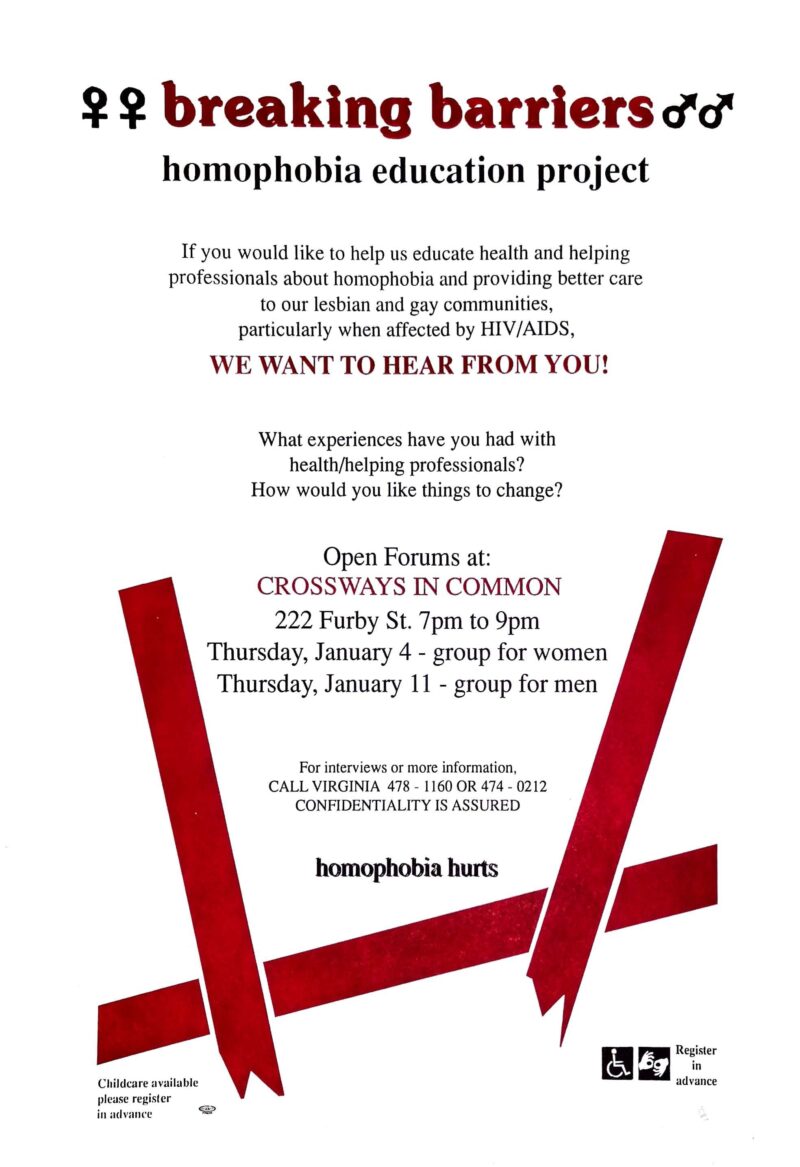Rainbow Resource Centre in the '90s

The 1987 inclusion of sexual orientation in the Manitoba Human Rights Code was an important victory for the generation of 2SLGBTQ+ activists that had been fighting for equality for decades. However, through the 1990s, things didn’t get easier. Growing discrimination, victimization against the community, compounded by the stigma of AIDS, prompted a massive shift in healthcare, the workplace, and schools.
To fight discrimination, education was critical.
In the mid-90s, funded by the AIDS Community Action Program, Rainbow Resource Centre launched Breaking Barriers, an anti-homophobia training course for the medical community, with the purpose of making healthcare spaces safer for 2SLGBTQ+ people.
Around the same time, Rainbow staff were hearing from youth in our programming about the abuse and trauma they were experiencing at schools. It wasn’t a secret—ally teachers and administrative staff were aware of growing homophobia in schools but felt pressured by parents and the system to resist addressing it. Fuelled by the success of Breaking Barriers in healthcare, Rainbow shifted focus to the education system.
But bringing anti-homophobia education into schools would prove much more challenging than it had been to healthcare.
Rainbow submitted a thorough report about real-life experiences of 2SLGBTQ+ students in schools—the evidence was clear, anti-homophobia education was critical. But when we submitted it to Winnipeg School Division No. 1 (WSD1), they dismissed it. At the time, the school system wasn't ready to confront the truth about homophobia.
However, it wouldn’t take long for that to change.
In 1999, Kristine Barr, one of the first out-lesbian school board trustees in Winnipeg, put forward a motion to include anti-discrimination education in WSD1. At first it wasn’t just 2SLGBTQ+ experiences, but all forms of discrimination; and after a vote, it passed. The school board opted to hold public community consultation meetings about what that content should consist of—and that’s when things really blew up.
The media negatively focussed on Kristine’s sexual orientation and what they called her “gay agenda,” causing a firestorm of hatred in the media. In particular, one radio station gave out her address and phone number, resulting in threats to her life, requiring the police to get involved. The meetings ended up swelling in size, and were held in the auditorium at R.B. Russell school to accommodate the hundreds of people who turned up for and against 2SLGBTQ+ students—should the schools support them or not?
The debates lasted for days and echoed the hateful rhetoric when fighting to include sexual orientation in the Code. In the end, WSD1 pushed for teachers and staff to receive anti-homophobia training, such as how to support 2SLGBTQ+ youth, awareness of homophobia, and how to quickly and effectively diffuse homophobic situations. (Oh, and Kristine sued the radio station for defamation—and won! Something that wouldn’t have been possible before 1987.)
This was the genesis of what is now Rainbow Resource Centre's Education Program. Almost 25 years later, our Diversity, Equity, and Inclusivity training is more popular than ever, with more and more workplaces, schools, and non-profit organizations eager to learn how to be better allies to 2SLGBTQ+ communities in Manitoba.
+++
This post is part of a 50th-anniversary series about our history of advocacy and service in Manitoba. You can find our posts on the 70s here and the 80s here.
